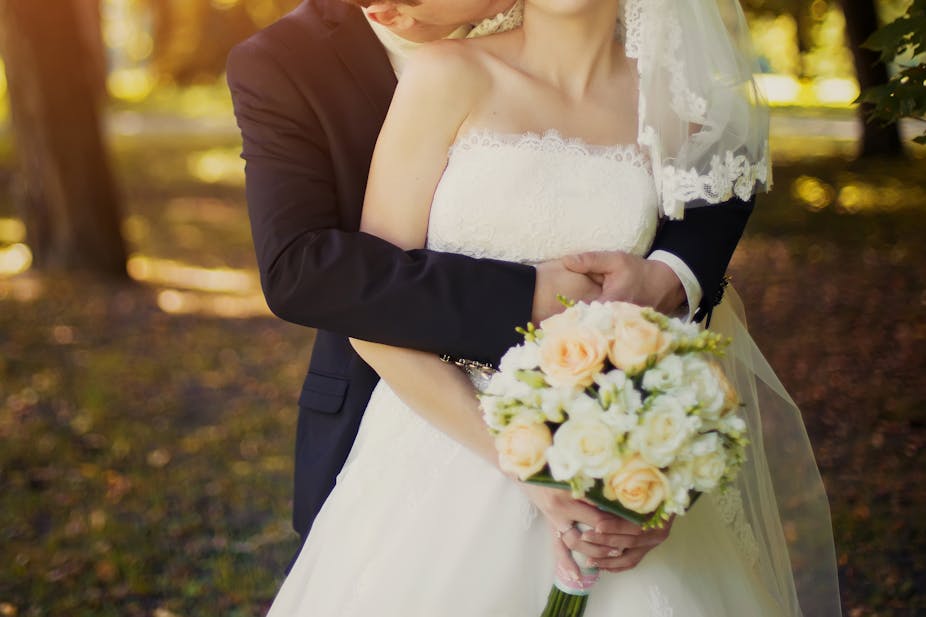Forced marriage was criminalised three years ago in Australia. Since then, Australia has taken robust steps to respond to forced marriage by shaping legal, education and community engagement. But significant challenges remain.
What is forced marriage?
Forced marriage is a form of gender-based violence that affects more women and girls than boys and men.
In Australian law, a forced marriage is where a person marries without fully and freely consenting to the marriage because of coercion, threat, deception or because he or she is “incapable of understanding the nature and effect of the marriage ceremony”.
Coercion includes psychological oppression, abuse of power and taking advantage of a person’s vulnerability. The formation of full and free consent can involve complex issues of structure, cultural background, community expectations, gender inequality, and additional vulnerabilities associated with age and unequal power relationships.
Since 2013, the Australian Federal Police (AFP) has received notification of more than 50 possible forced marriage cases. The AFP has referred 17 people at risk of or in a forced marriage to the government-funded Support for Trafficked People Program administered by the Australian Red Cross.
Of the 17 referrals, the majority were young women or girls under the age of 18 who were Australian citizens or residents at the time.
The forced marriage offences in the Criminal Code extend to all forms of marriage. This includes cultural and religious marriages, registered relationships and marriages that take place in Australia or overseas where the person exercising the coercion, threat or deception is an Australian citizen or permanent resident.
The Marriage Act provides that 18 years is the marriageable age in Australia, with extremely rare exceptions. Recent reports of cultural or religious marriages involving minors resulted in a reassessment of the scope of the 2013 forced marriage offence provisions.
One such case involved a 12-year-old girl in NSW who went through a non-legally sanctioned marriage to a 27-year-old man in a ceremony organised by her father.
The legislation was changed in late 2015 to expand the definition of forced marriage to include a rebuttable presumption that a person under the age of 16 cannot consent to the marriage.
What does the research tell us?
While there is little research into forced marriage, family law case reports highlight patterns of coercion and unequal power relationships.
In one such case, Essey & Elia, Ms Elia (not her real name) made an application to the Federal Circuit Court for an order in relation to her six-year-old daughter.
As part of Ms Elia’s evidence to the court she described her own marriage at the age of 14 in a “non-legally sanctioned marriage ceremony”:
My mother pushed me to get married. She would say to me, words to the effect, “You will have your fun. Your dad is strict. You can come and go as you please. You’ve always wanted to go out to Jamberoo and Wonderland. You get to go to movies, have popcorn, lollies, ice-cream and chocolate. You get to have fun and life. What you see of everyone having fun on the TV, this is what it is going to be like. You’re very, very lucky.
The court found that Ms Elia did not consent to the marriage.
What is being done about it?
Education and awareness-raising has been a major focus of the Australian government with the development of a Forced Marriage Community Pack and training resources for frontline government officers.
Community-based organisations such as the Australian Muslim Women’s Centre for Human Rights and the Australian Catholic Religious Against Trafficking in Humans were funded to develop prevention strategies. Anti-Slavery Australia developed a website on forced marriage including a national legal service.
The majority of those identified as at risk of forced marriage are under the age of 18 years, which raises issues of cross-jurisdictional responsibility. Child protection is primarily a state and territory responsibility. Greater co-ordination between all levels of government and service standard-setting would benefit those at risk of forced marriage.
Additionally, vulnerable young adults may require stronger legal protection. While the Family Law Act provides for protective orders to be made for the welfare of children, the court’s jurisdiction ceases when the child turns 18.
In Australia, recent cases have suggested that more needs to be done to protect young people over the age of 18 who are at risk of forced marriage. This could include broadening the Family Court’s jurisdiction or creating a system of civil protection, such as the UK Forced Marriage Protection Order system. This can make a protective order on behalf of any person fearing forced marriage, regardless of their age.
In the last three years there have been significant steps to ensure better human rights protections for those facing forced marriage. But more needs to be done to ensure that vulnerable members of our community are protected by strong legal frameworks and better social support to promote a society in which, as the Universal Declaration of Human Rights says:
Marriage shall be entered into only with the free and full consent of the intending spouses.

